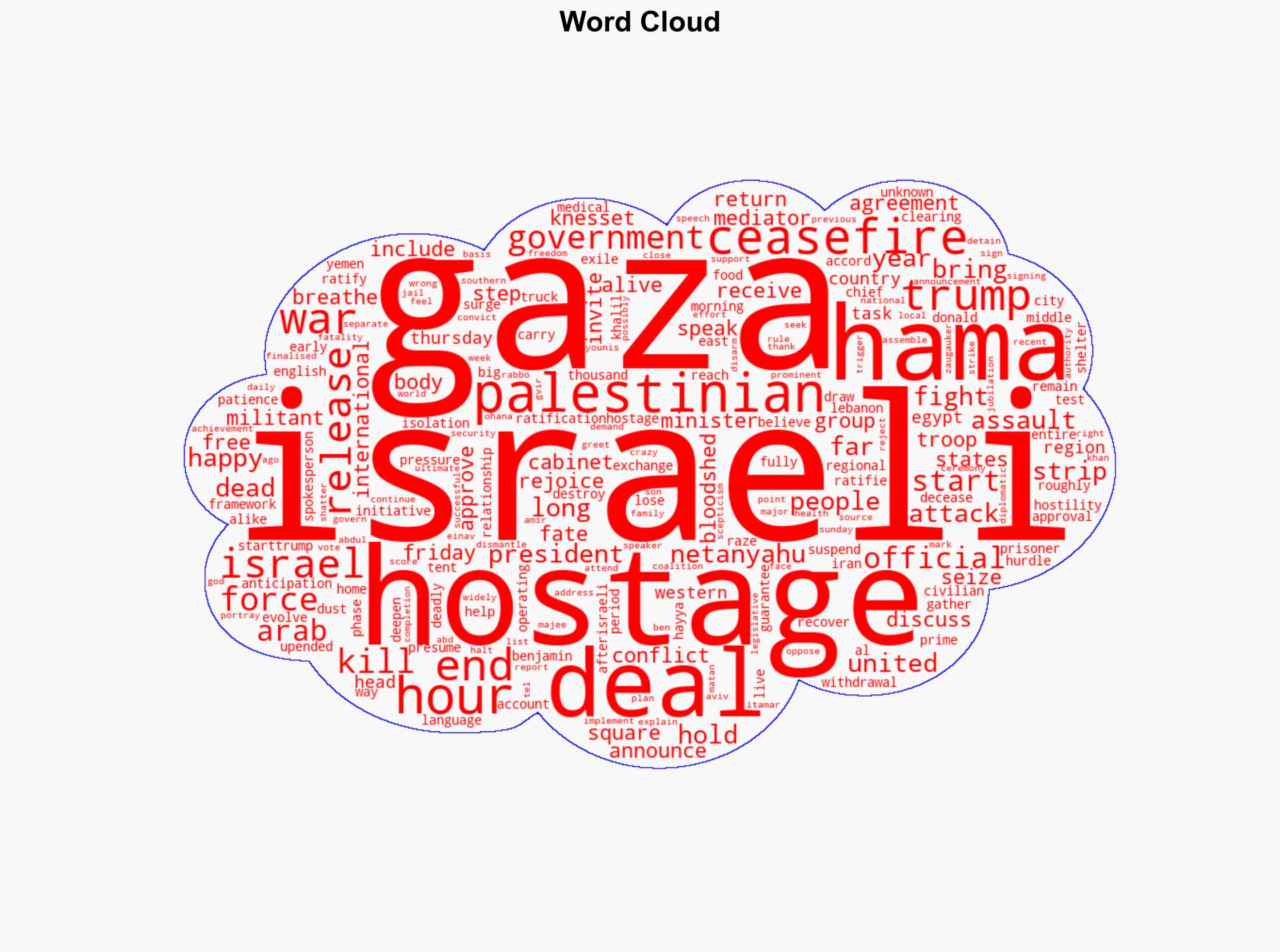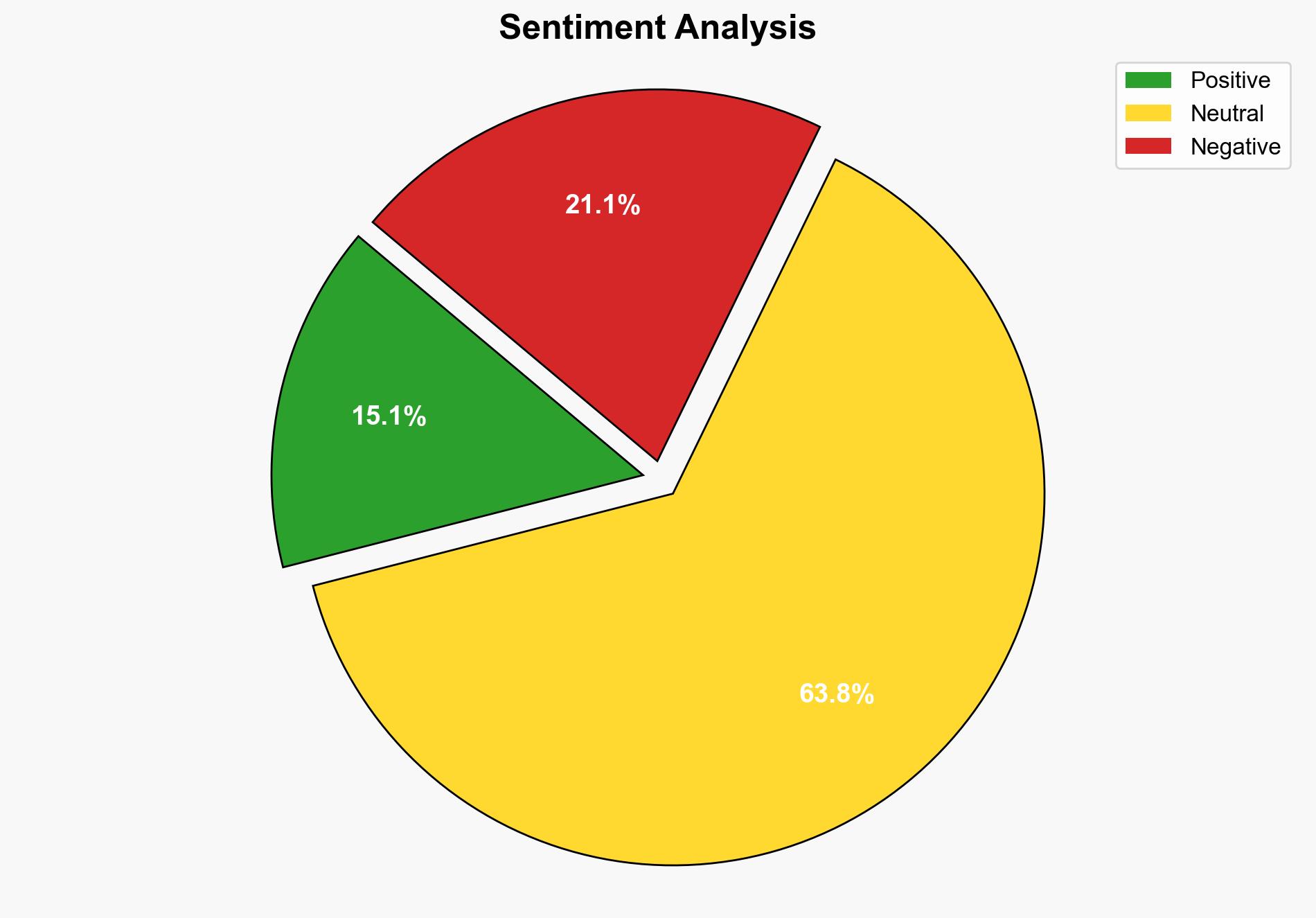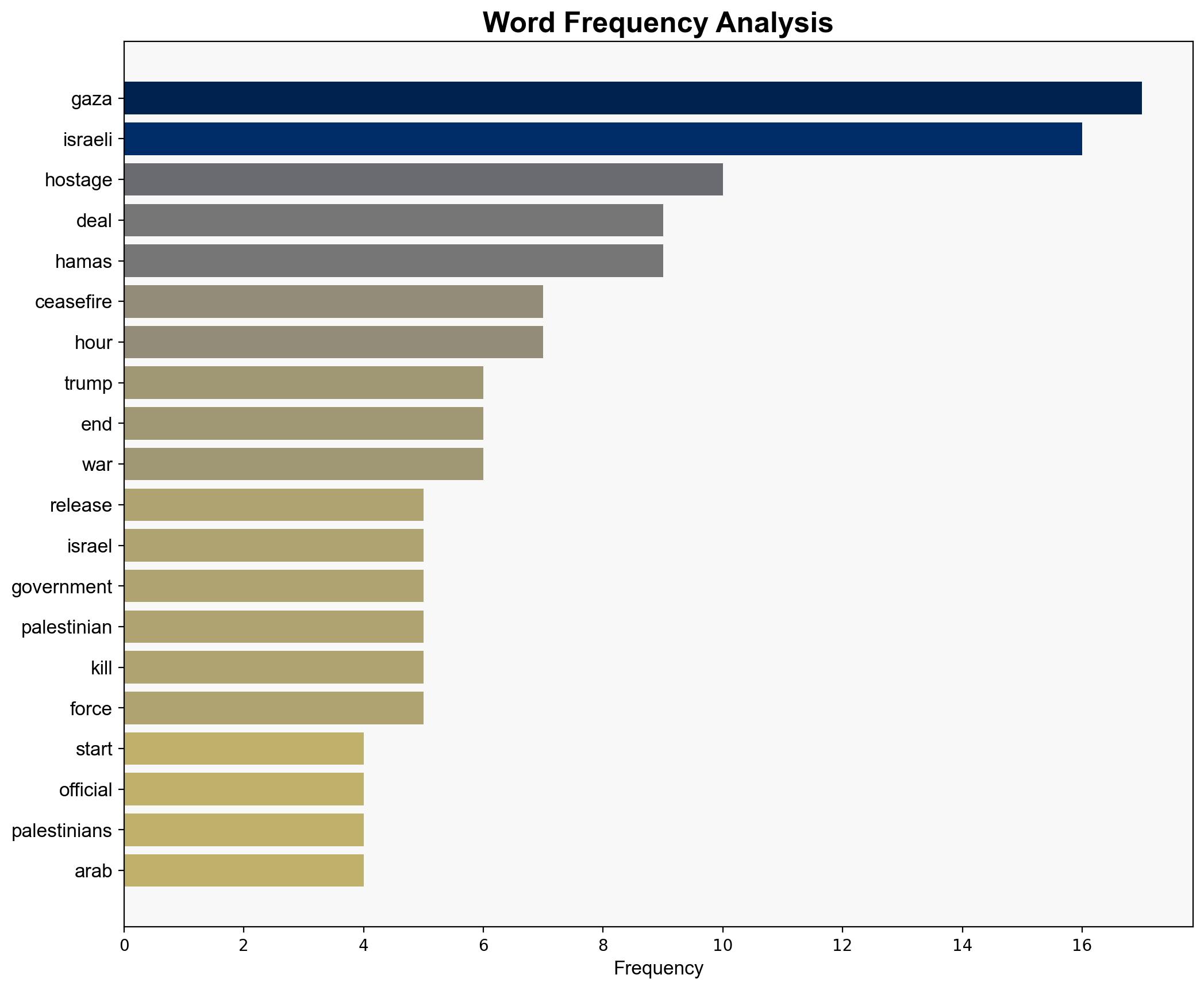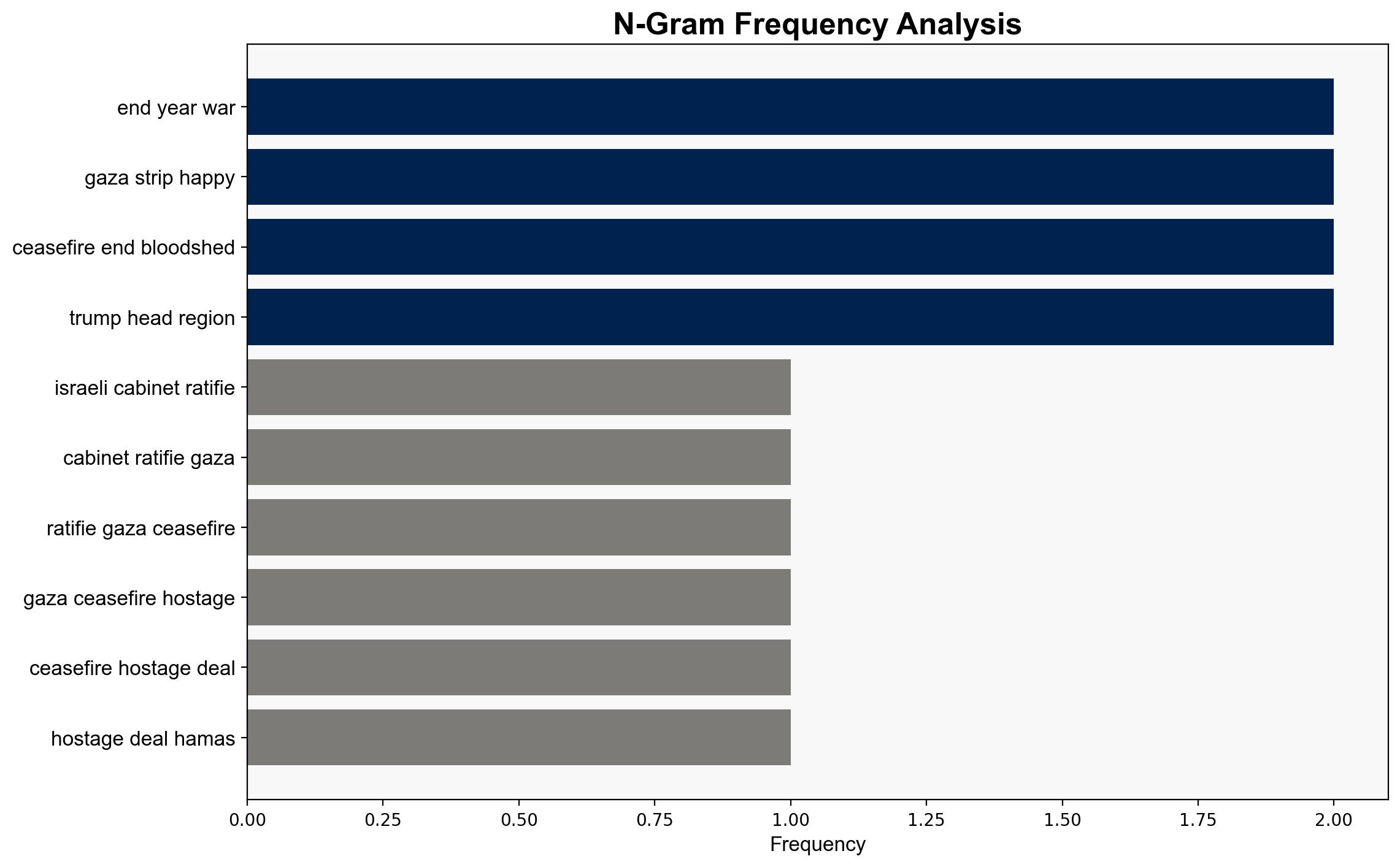Israel and Hamas agree to Gaza ceasefire and return of hostages – Independent.ie
Published on: 2025-10-09
Intelligence Report: Israel and Hamas agree to Gaza ceasefire and return of hostages – Independent.ie
1. BLUF (Bottom Line Up Front)
The most supported hypothesis is that the ceasefire and hostage exchange deal between Israel and Hamas is a temporary measure driven by international pressure and humanitarian concerns. Confidence level: Moderate. Recommended action: Monitor for compliance and prepare contingency plans for potential breakdowns or escalations.
2. Competing Hypotheses
Hypothesis 1: The ceasefire and hostage exchange are genuine steps towards a long-term peace process, facilitated by international mediation and pressure, particularly from the United States.
Hypothesis 2: The ceasefire is a temporary tactical maneuver by both parties to regroup and re-strategize, with no real commitment to lasting peace.
3. Key Assumptions and Red Flags
Assumptions:
– Hypothesis 1 assumes that both parties are willing to compromise for peace.
– Hypothesis 2 assumes that both parties are primarily motivated by strategic gains rather than peace.
Red Flags:
– Lack of detail on the enforcement mechanisms for the ceasefire.
– Absence of clear commitments from Hamas regarding disarmament.
– Potential bias in reporting due to political influences.
4. Implications and Strategic Risks
– Geopolitical Risks: Failure of the ceasefire could lead to renewed hostilities, drawing in regional actors like Iran and Lebanon.
– Economic Impact: Prolonged conflict could destabilize regional economies and disrupt trade routes.
– Psychological Impact: Continued uncertainty may exacerbate tensions among civilian populations, increasing radicalization risks.
5. Recommendations and Outlook
- Enhance intelligence gathering to verify compliance with the ceasefire terms.
- Engage in diplomatic efforts to support and sustain the ceasefire, involving key regional players.
- Scenario Projections:
- Best Case: Ceasefire holds, leading to broader peace negotiations.
- Worst Case: Breakdown of the ceasefire, escalating into a wider regional conflict.
- Most Likely: Temporary cessation of hostilities with sporadic violations.
6. Key Individuals and Entities
– Benjamin Netanyahu
– Khalil al-Hayya
– Donald Trump
– Itamar Ben Gvir
– Amir Ohana
7. Thematic Tags
national security threats, regional stability, conflict resolution, international diplomacy





